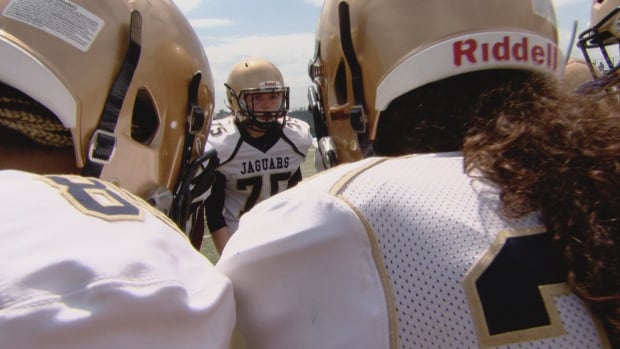New research suggests girls are falling behind boys when it comes to participating in sports in Canada, prompting calls to close the gap and keep girls active.
According to the Rally Report 2024: A Call to Reimagine Sport So All Girls Can Play, released on Monday, 63 per cent of girls surveyed from ages six to 18 report taking part in team or individual sports weekly. That’s compared to 68 per cent of boys. Team sports include basketball and volleyball, while individual sports include tennis and swimming.
The research was conducted by Canadian Women & Sport, a national non-profit that acts as a voice for girls and women in sports in Canada, and IMI Consulting, a consulting firm, who surveyed 2,068 girls as part of a larger representative study of Canadians in July 2024.
Allison Sandmeyer-Graves, CEO of Canadian Women & Sport, said there was a resounding sentiment in the report that girls believe that sports are for boys.
“Girls are still saying that sport just doesn’t feel like it’s been designed with their needs and interests in mind, and that they’re confronting barriers that are keeping them from playing sports at all or in the ways that they would like,” Sandmeyer-Graves said.
“Clearly, girls are still getting a message in our society and in these sport environments that they just aren’t valued in the same way that boys are.”
The report, funded by Canadian Tire Jumpstart Charities, which helps kids overcome financial and accessibility barriers to sport and recreation, found a number of barriers to girls’ participation in sports. Those barriers include time commitment, fatigue or injury, cost, and a lack of confidence. More needs to be done to ensure girls don’t miss out on the benefits of being active, it said.
According to the report, the number of girls missing out on the benefits of sports jumps from nearly four in 10 to five in 10 by age 16. Girls from lower-income families of all racial backgrounds are also less likely to participate. And that’s especially true when the girls have a disability, the report says.
Number of girls leaving sport rises in teenage years: study
Sandmeyer-Graves said leaders of sports organizations need to take action to boost girls’ participation in sports because of the physical and mental health benefits they provide. These leaders include administrators, board members, coaches and activity leaders, she said.
“We believe so strongly and the girls themselves tell us very clearly that there are significant benefits to them participating in sport now and across the span of their lives,” Sandmeyer-Graves said.
“What we remain concerned about, though, is that the rates are still lower than boys, that more than one million girls are still missing out on the benefits of sport. And the number of girls leaving sport grows as they age through those teen years,” she added
The report calls for an increase in investment in girls’ sports organizations, girl-centred coaching practices and safe environments where all girls feel welcome and supported in sport.
It also recommends that coaches and activity leaders be taught how to communicate with girls; diverse female athletes be given leadership opportunities; families be educated on the benefits of sports; girls have options when it comes to uniforms, access to private changing rooms; body diversity be promoted; and open dialogue to destigmatize the menstrual cycle in sport.
“How do you create environments where girls feel like they can truly belong? Some of the specific things that girls themselves talked about were things like they want more affordable options. They want programs designed for girls with their needs right at the centre of the design. They want programs that are more supportive of diversity and inclusion, and they would love to see more celebration and visibility for girls and women in sport.”

The report also found that among those surveyed:
- Two in five girls report that comments about their appearance, clothing, or religious attire impact their participation in sport.
- Half of the girls surveyed feel inspired by coaches and role models who represent their diverse backgrounds.
- Nearly seven in 10 girls report that family members play a positive role in their sport experience.
- One in two girls said participating in sport positively influences their body image, though one in three report comments about their bodies undermine their confidence.
- Seven in 10 girls feel that sport and physical activity positively impact their mental health.
- Nearly one in two girls ages 13 to 18 feel that their menstrual cycle impacts their participation in sport.


